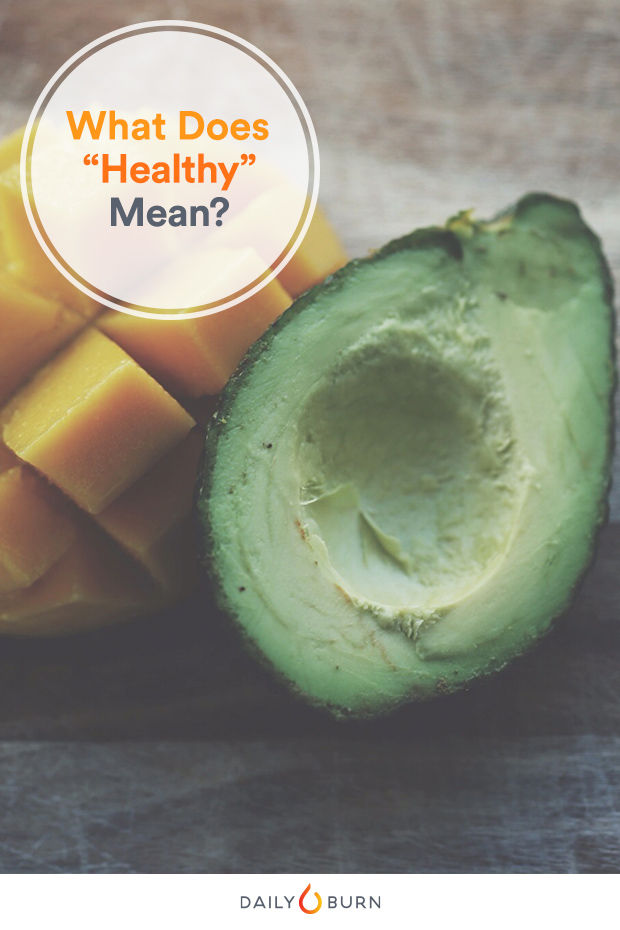
Deciphering food labels can sometimes feel like you’re trying to crack a secret code. Manufacturers slap “natural,” “gluten-free” and “fat-free” on food packages, but products often can include a host of ingredients that contradict their claims. You know to never judge a book by its cover, but with food labels it’s a must. And separating the good from the bad gets tricky. That’s even true of the term “healthy.” Now, the Food and Drug Administration (FDA) is on a mission to clear up the confusion.
What complicates things: The last time we defined the term “healthy” was more than 20 years ago. The current definition dates back to 1994, and a lot has changed in nutritional science since then. The government did announce an overhaul of the Nutrition Facts label this year and updated Dietary Guidelines last year.
Both of those revamps no longer emphasize eating a low-fat diet and instead focus on limiting bad fats, eating more good fats, cutting back on added sugars and opting for vitamin- and mineral-dense foods. Yet, products that get a healthy stamp of approval don’t always reflect that standard, particularly in terms of fat content. Under the current definition of healthy, anything from fat-free chocolate pudding to gummy bears score the title, while almonds, salmon and avocados don’t. (Baffling, right?)
RELATED: This Graphic Shows How Much Sugar is Hiding on Your Plate
As a Matter of Fat…
Think back to the ‘90s when fat-free products were a craze. You’d never buy a food known for being full-fat, like sour cream and mayonnaise, without picking up the low-fat version. These days, we’ve become fixated on sugar and restricting it from our diets. And often times, when food companies remove fat from their products, they replace it with the sweet stuff.
“We used to tell people to limit avocados and fatty fish and go for fat-free snacks. That’s completely reversed.”
“Even though we have these innovative guidelines, the labeling law is antiquated by comparison,” says Frances Largeman-Roth, RDN, a nutrition expert and author of Eating in Color, who is also affiliated with KIND Snacks. “We used to tell people to limit avocados and fatty fish and go for fat-free snacks. That’s completely reversed. Now we tell people to eat a handful of nuts to feel more satisfied and get more nutrient-dense foods.”
In December 2015, KIND Snacks recognized this disconnect between the benefits of full-fat foods and promoting low-fat versions as healthy. It all started with a letter the government sent to KIND. It said they violated labeling rules by putting “healthy” on their bars that contained more than one gram of saturated fat. Considering their products contained real ingredients and most of the fat came from nuts, KIND didn’t budge. They stood up to their healthy claim and started a Citizen Petition to get the government to redefine what healthy means.
“KIND created the Citizen Petition to request better alignment between food labeling regulations, the latest nutrition science and federal dietary guidelines to ensure the public receives sound and consistent guidance about nutrition,” Justin Mervis, head of regulatory affairs at KIND Snacks told Daily Burn via email.
RELATED: Saturated Fat: Is It Really That Bad For You?
Re-Writing the Rules
“We hope more companies will use the ‘healthy’ claim as the basis for new product innovation and reformulation.”
Who could blame KIND for holding its own? Nutrition science shows that fats from nuts are actually good for your heart and could potentially help you live longer. So the people at the top listened to that petition. And they’re calling on you to help them rewrite the meaning of healthy.
“By updating the definition, we hope more companies will use the ‘healthy’ claim as the basis for new product innovation and reformulation, providing consumers with a greater variety of ‘healthy’ choices in the marketplace,” Douglas Balentine, PhD, director of the Office of Nutrition and Food Labeling at the FDA’s Center for Food Safety and Applied Nutrition said in a statement.
RELATED: 21 Low-Calorie Snacks You’ll Want to Eat Every Day
Packaged Foods We Can Trust
Here at Daily Burn, we believe in clean eating and the occasional indulgence. (No one should have to go through life without dessert or a cocktail every now and then!) And while we certainly promote the benefits of making hearty meals at home, we totally get that that’s not always feasible. Packaged foods provide a convenience you just need sometimes. The main goal is finding products with nutritious, real ingredients and evaluating how those items fit into your diet as a whole. While the best foods come without labels, it’s nice to know the FDA is making it easier to find healthy packaged foods.
So how do you think the FDA should define “healthy?” What do you expect from a food with this label? Check out a list of questions to consider at end of this document. Then submit your thoughts to the Federal Register at this link. Don’t forget to share your comments with us, too!
